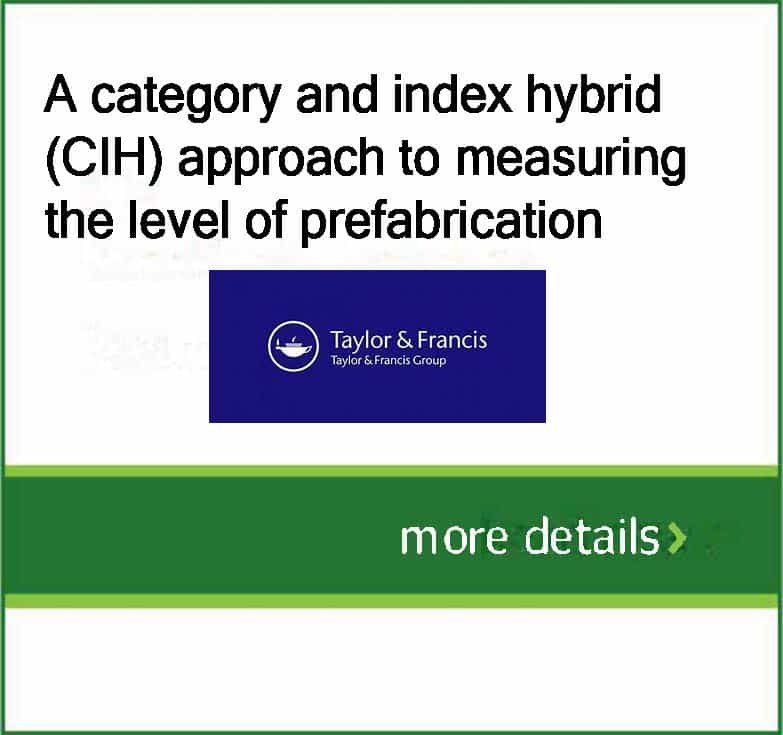
Two generic approaches exist to measuring the level of prefabrication (LoP) in construction. One is the ‘category’ approach to indicating which prefabrication type a building adopts. Another is the ‘index’ approach to measuring the ratio of prefabrication in the total construction volume. However, existing studies still face difficulty in understanding the true picture of prefabrication in a building project by adopting either category or index approach. To address this issue, this study aims to develop a ‘category and index hybrid’ (CIH) approach to measuring the LoP holistically. Firstly, a tentative CIH model was developed. Then, the model was used to measure 15 sizeable high-rise building projects in Hong Kong, which have adopted different prefabrication components. Finally, the approach was presented to industrial stakeholders for validation via interviews on its strengths, weaknesses, and prospective applications. A strong positive correlation was revealed between Levels 0 and 1 prefabrication usage based on Pearson correlation, r. It also found that the CIH approach’s ‘category’ component allows people to quickly grasp a building’s prefabrication types, while its ‘index’ component allows a numerical understanding of prefabrication in the entire construction. The interview results denoted that the CIH approach can enable a series of meaningful applications.
More details here



